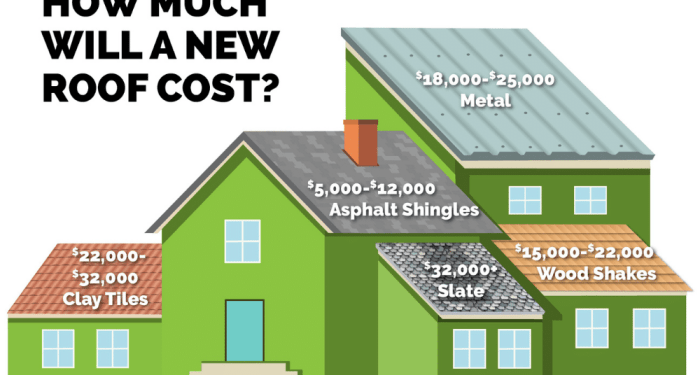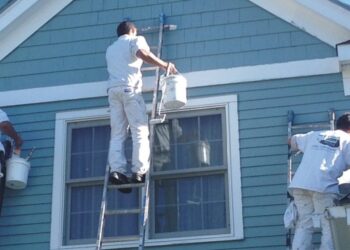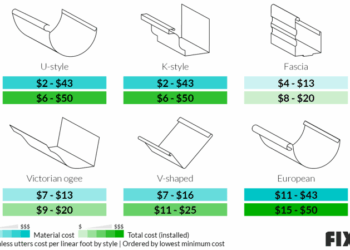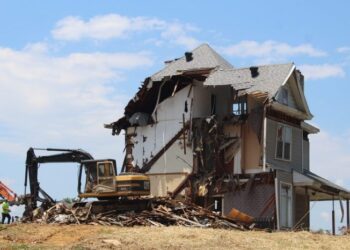Dive into the world of roof replacement cost estimates as we uncover the key factors influencing pricing, types of materials used, labor costs, and additional expenses. This comprehensive guide will equip you with the knowledge needed to navigate the complexities of estimating the cost of replacing your roof.
Factors Influencing Roof Replacement Cost Estimate
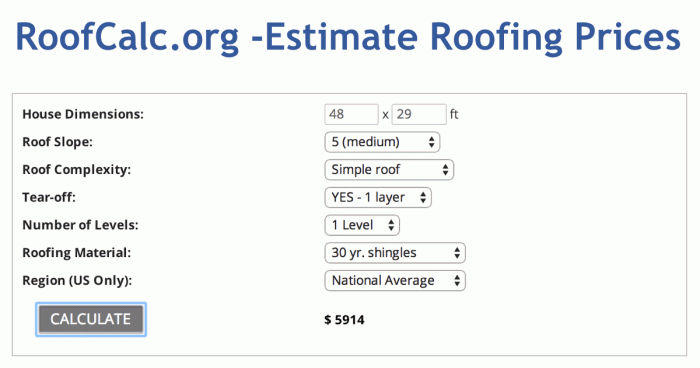
When estimating the cost of replacing a roof, several factors come into play that can significantly impact the overall cost. Understanding these factors is crucial for homeowners looking to budget for this essential home improvement project.
Size of the Roof
The size of the roof is one of the primary factors influencing the cost estimate for replacement. Larger roofs require more materials and labor to complete the job, resulting in higher costs. Roofing contractors typically calculate the cost per square foot, so the larger the roof, the more expensive the replacement will be.
Materials Quality
The quality of materials used for the replacement also plays a significant role in determining the cost estimate. High-quality materials, such as premium shingles or metal roofing, will come at a higher price point compared to standard materials. While opting for higher quality materials may increase the initial cost, they often offer better durability and longevity, potentially saving money in the long run.
Roof Slope or Pitch
The slope or pitch of the roof can impact the overall cost estimate due to the complexity it adds to the installation process. Steeper roofs require additional safety measures and specialized equipment, leading to higher labor costs. Additionally, steep roofs may require more materials to ensure proper installation, further contributing to the total cost.
Roof Complexity
The complexity of the roof structure, including features like multiple angles, valleys, dormers, or skylights, can also influence the cost estimate for replacement. These architectural elements require more time and expertise to work around, increasing labor costs. Moreover, intricate roof designs may necessitate custom fitting and additional materials, adding to the overall expense of the project.
Types of Roofing Materials and Their Cost Implications
When it comes to replacing a roof, the choice of roofing material plays a significant role in determining the overall cost. Different materials have varying costs, durability, and longevity, which all impact the estimate provided by contractors.
Asphalt Shingles
Asphalt shingles are one of the most common roofing materials due to their affordability. They are relatively inexpensive compared to other options, making them a popular choice for homeowners on a budget. However, asphalt shingles have a shorter lifespan compared to other materials, typically lasting around 20-30 years.
Metal Roofing
Metal roofing is known for its durability and longevity. While the upfront cost of metal roofing is higher than asphalt shingles, it can last 50 years or more with proper maintenance. This longevity can make metal roofing a cost-effective option in the long run.
Tile Roofing
Tile roofing is a more expensive option upfront, but it offers a unique and aesthetically pleasing look to a home. Tiles can last 50 years or more, making them a durable choice. However, the weight of tile roofing may require additional structural support, adding to the overall cost of installation.
Other Materials
There are other roofing materials available, such as wood shakes, slate, and synthetic materials. Each of these options has its own cost implications based on factors like material quality, installation complexity, and maintenance requirements. It's essential to consider the long-term costs and benefits of each material when estimating the total cost of a roof replacement.
Labor Costs and its Impact on Roof Replacement
Labor costs play a significant role in determining the overall cost of a roof replacement project. Understanding how labor costs are factored into the estimate is crucial for homeowners looking to budget for such a project.
Role of Labor Efficiency
Labor efficiency is a key factor in determining the overall cost of a roof replacement. A more efficient crew can complete the job in less time, reducing labor costs significantly. Factors that impact labor efficiency include the experience and skill level of the workers, as well as the availability of specialized equipment.
Complexity of the Job
The complexity of the job also has a direct impact on labor costs. A simple roof replacement with a standard pitch and easy access will require less labor compared to a complex job involving multiple angles, steep pitches, or intricate roof designs.
The more complex the job, the higher the labor costs are likely to be.
Variability Based on Location and Market Conditions
Labor costs can vary significantly based on the location of the project and current market conditions. In areas with a high cost of living or high demand for roofing services, labor costs are likely to be higher. Additionally, factors such as seasonality, weather conditions, and local labor regulations can also influence labor costs.
Additional Costs to Consider
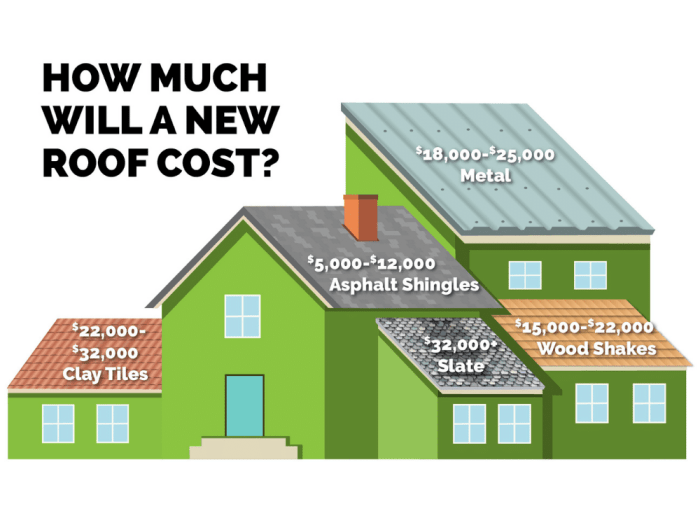
When planning for a roof replacement, it's essential to consider various additional costs that can impact the overall estimate. These costs go beyond just materials and labor and can significantly affect the total expense of the project.
Importance of Permits and Disposal Fees
Permits are often required for roof replacement projects, and the cost of obtaining these permits should be factored into the overall estimate. Failure to obtain the necessary permits can result in fines or delays, ultimately increasing the cost of the project.
Disposal fees are another crucial consideration, as removing the old roofing materials can incur additional costs depending on the quantity and type of waste.
Impact of Roof Underlayment, Flashing, and Ventilation
Roof underlayment, flashing, and ventilation are essential components of a roofing system that contribute to its durability and longevity. While often overlooked, these elements can add to the overall cost of the project. High-quality underlayment, proper flashing installation, and adequate ventilation can increase the upfront cost but provide long-term benefits in terms of energy efficiency and protection against leaks.
Examples of Unforeseen Costs
During a roof replacement project, homeowners may encounter unforeseen costs that were not initially included in the estimate. Examples of such costs include repairing damaged roof decking, addressing mold or water damage, or discovering structural issues that need to be fixed before the new roof can be installed.
These unexpected expenses can significantly impact the budget and should be accounted for to avoid any financial surprises during the project.
Summary
In conclusion, understanding the intricacies of roof replacement cost estimates is essential for homeowners embarking on this significant project. By grasping the various elements that contribute to the overall cost, you can make informed decisions and ensure a successful roof replacement experience.
Answers to Common Questions
How does the size of the roof impact the cost estimate?
The larger the roof, the more materials and labor will be required, leading to a higher cost estimate.
What are some common types of roofing materials and their cost implications?
Common types include asphalt shingles, metal, and tile, each with varying costs and longevity.
How are labor costs factored into the roof replacement cost estimate?
Labor costs are determined based on the complexity of the job, efficiency of the workers, and market conditions.
What additional costs should homeowners consider during roof replacement?
Homeowners should factor in permits, disposal fees, underlayment, flashing, ventilation, and potential unforeseen costs.
Dive into the world of roof replacement cost estimates as we uncover the key factors influencing pricing, types of materials used, labor costs, and additional expenses. This comprehensive guide will equip you with the knowledge needed to navigate the complexities of estimating the cost of replacing your roof.
Factors Influencing Roof Replacement Cost Estimate

When estimating the cost of replacing a roof, several factors come into play that can significantly impact the overall cost. Understanding these factors is crucial for homeowners looking to budget for this essential home improvement project.
Size of the Roof
The size of the roof is one of the primary factors influencing the cost estimate for replacement. Larger roofs require more materials and labor to complete the job, resulting in higher costs. Roofing contractors typically calculate the cost per square foot, so the larger the roof, the more expensive the replacement will be.
Materials Quality
The quality of materials used for the replacement also plays a significant role in determining the cost estimate. High-quality materials, such as premium shingles or metal roofing, will come at a higher price point compared to standard materials. While opting for higher quality materials may increase the initial cost, they often offer better durability and longevity, potentially saving money in the long run.
Roof Slope or Pitch
The slope or pitch of the roof can impact the overall cost estimate due to the complexity it adds to the installation process. Steeper roofs require additional safety measures and specialized equipment, leading to higher labor costs. Additionally, steep roofs may require more materials to ensure proper installation, further contributing to the total cost.
Roof Complexity
The complexity of the roof structure, including features like multiple angles, valleys, dormers, or skylights, can also influence the cost estimate for replacement. These architectural elements require more time and expertise to work around, increasing labor costs. Moreover, intricate roof designs may necessitate custom fitting and additional materials, adding to the overall expense of the project.
Types of Roofing Materials and Their Cost Implications
When it comes to replacing a roof, the choice of roofing material plays a significant role in determining the overall cost. Different materials have varying costs, durability, and longevity, which all impact the estimate provided by contractors.
Asphalt Shingles
Asphalt shingles are one of the most common roofing materials due to their affordability. They are relatively inexpensive compared to other options, making them a popular choice for homeowners on a budget. However, asphalt shingles have a shorter lifespan compared to other materials, typically lasting around 20-30 years.
Metal Roofing
Metal roofing is known for its durability and longevity. While the upfront cost of metal roofing is higher than asphalt shingles, it can last 50 years or more with proper maintenance. This longevity can make metal roofing a cost-effective option in the long run.
Tile Roofing
Tile roofing is a more expensive option upfront, but it offers a unique and aesthetically pleasing look to a home. Tiles can last 50 years or more, making them a durable choice. However, the weight of tile roofing may require additional structural support, adding to the overall cost of installation.
Other Materials
There are other roofing materials available, such as wood shakes, slate, and synthetic materials. Each of these options has its own cost implications based on factors like material quality, installation complexity, and maintenance requirements. It's essential to consider the long-term costs and benefits of each material when estimating the total cost of a roof replacement.
Labor Costs and its Impact on Roof Replacement
Labor costs play a significant role in determining the overall cost of a roof replacement project. Understanding how labor costs are factored into the estimate is crucial for homeowners looking to budget for such a project.
Role of Labor Efficiency
Labor efficiency is a key factor in determining the overall cost of a roof replacement. A more efficient crew can complete the job in less time, reducing labor costs significantly. Factors that impact labor efficiency include the experience and skill level of the workers, as well as the availability of specialized equipment.
Complexity of the Job
The complexity of the job also has a direct impact on labor costs. A simple roof replacement with a standard pitch and easy access will require less labor compared to a complex job involving multiple angles, steep pitches, or intricate roof designs.
The more complex the job, the higher the labor costs are likely to be.
Variability Based on Location and Market Conditions
Labor costs can vary significantly based on the location of the project and current market conditions. In areas with a high cost of living or high demand for roofing services, labor costs are likely to be higher. Additionally, factors such as seasonality, weather conditions, and local labor regulations can also influence labor costs.
Additional Costs to Consider

When planning for a roof replacement, it's essential to consider various additional costs that can impact the overall estimate. These costs go beyond just materials and labor and can significantly affect the total expense of the project.
Importance of Permits and Disposal Fees
Permits are often required for roof replacement projects, and the cost of obtaining these permits should be factored into the overall estimate. Failure to obtain the necessary permits can result in fines or delays, ultimately increasing the cost of the project.
Disposal fees are another crucial consideration, as removing the old roofing materials can incur additional costs depending on the quantity and type of waste.
Impact of Roof Underlayment, Flashing, and Ventilation
Roof underlayment, flashing, and ventilation are essential components of a roofing system that contribute to its durability and longevity. While often overlooked, these elements can add to the overall cost of the project. High-quality underlayment, proper flashing installation, and adequate ventilation can increase the upfront cost but provide long-term benefits in terms of energy efficiency and protection against leaks.
Examples of Unforeseen Costs
During a roof replacement project, homeowners may encounter unforeseen costs that were not initially included in the estimate. Examples of such costs include repairing damaged roof decking, addressing mold or water damage, or discovering structural issues that need to be fixed before the new roof can be installed.
These unexpected expenses can significantly impact the budget and should be accounted for to avoid any financial surprises during the project.
Summary
In conclusion, understanding the intricacies of roof replacement cost estimates is essential for homeowners embarking on this significant project. By grasping the various elements that contribute to the overall cost, you can make informed decisions and ensure a successful roof replacement experience.
Answers to Common Questions
How does the size of the roof impact the cost estimate?
The larger the roof, the more materials and labor will be required, leading to a higher cost estimate.
What are some common types of roofing materials and their cost implications?
Common types include asphalt shingles, metal, and tile, each with varying costs and longevity.
How are labor costs factored into the roof replacement cost estimate?
Labor costs are determined based on the complexity of the job, efficiency of the workers, and market conditions.
What additional costs should homeowners consider during roof replacement?
Homeowners should factor in permits, disposal fees, underlayment, flashing, ventilation, and potential unforeseen costs.

